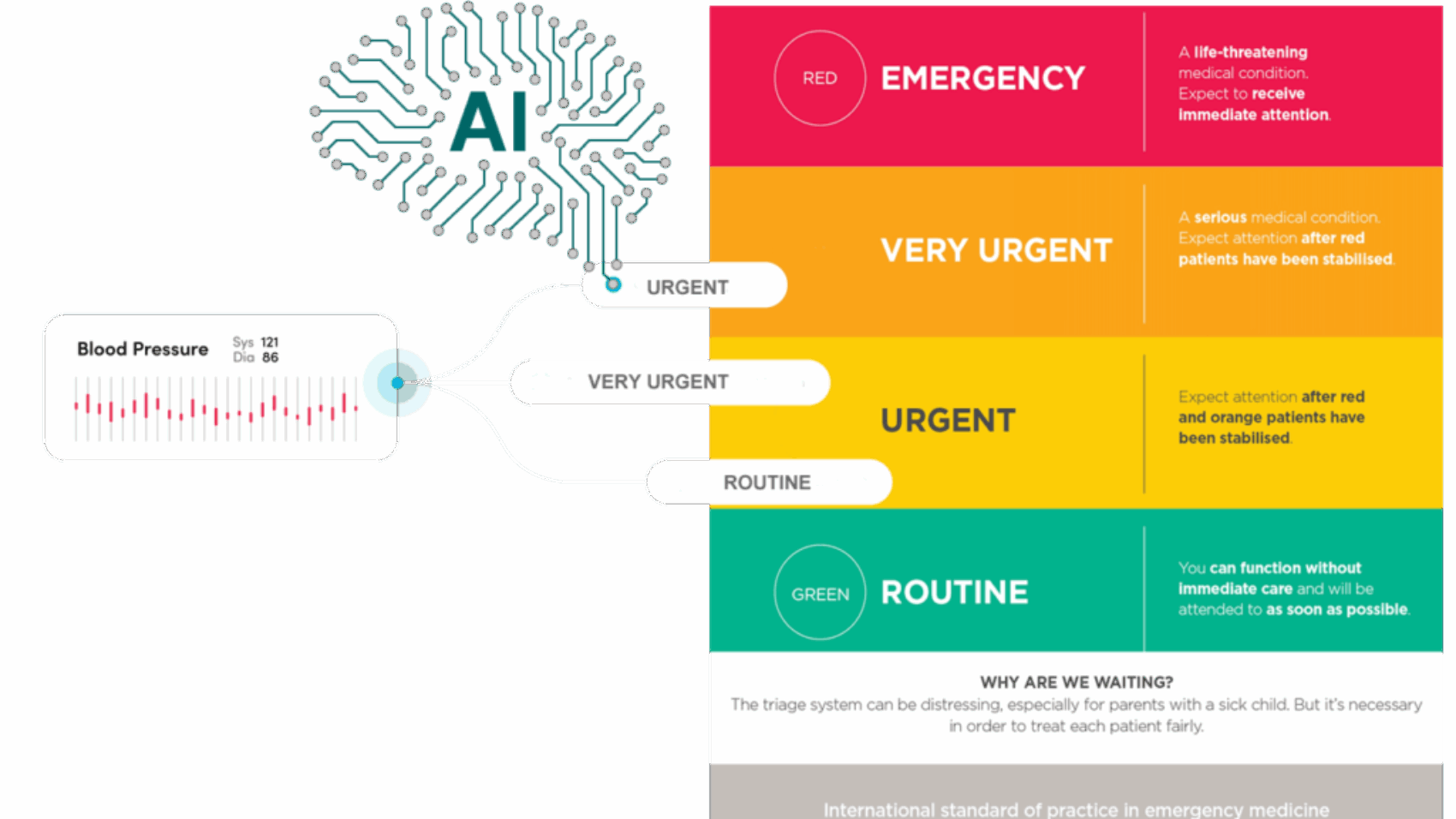In healthcare, especially in emergencies, time is crucial. A delay of just a few minutes can drastically affect a patient’s chances of survival and recovery. Delayed care has long been a challenge for hospitals, particularly in emergency rooms where resources are limited, and rapid decisions are necessary. Fortunately, ERTriage systems — advanced, technology-driven solutions—are revolutionizing the way emergency care is provided, significantly reducing delays and improving patient outcomes.
ERTriage not only speeds up the process but also enhances the overall quality of care by ensuring that patients with the most critical needs receive timely attention. This article explores how ERTriage systems function, their role in minimizing delays, and their life-saving potential.
What is ERTriage?
ERTriage, short for electronic triage, refers to a technology-based system designed to help prioritize patients in medical settings. By harnessing artificial intelligence (AI), machine learning, and advanced algorithms, eTriage systems analyze patient symptoms, vital signs, and medical histories in real time. This allows healthcare providers to assess the severity of a patient’s condition faster and more accurately.
Traditional triage systems rely on manual assessment by healthcare professionals, which can lead to delays and human error. ERTriage systems automate this process, eliminating the time and potential for mistakes associated with manual evaluation. This leads to quicker and more reliable decision-making, ensuring critical patients receive the care they need without unnecessary delays.
Key Features of ERTriage Systems
- Real-Time Analysis: ERTriage systems can evaluate patient data immediately upon arrival, providing quick insights into the severity of the condition.
- Prioritization Algorithms: Patients are sorted based on the urgency of their medical needs, ensuring those who require immediate attention are prioritized.
- Integration with Health Records: By accessing patient medical histories, ERTriage helps healthcare professionals make better-informed decisions.
- Scalability: ERTriage systems can be adapted for hospitals of all sizes, from small clinics to large medical centers, improving efficiency regardless of the facility’s capacity.
The Impact of Delayed Care
- Increased Mortality
Every minute counts in treating conditions like stroke or heart attack. For example, in ischemic strokes, patients lose around 1.9 million brain cells per minute without intervention. - Emotional and Physical Strain on Patients
Long wait times cause distress and anxiety for patients and their families. The uncertainty and discomfort experienced during long waits can worsen their physical and mental state, potentially leading to further complications.
How ERTriage Systems Address Delayed Care
ERTriage systems tackle the root causes of delays in emergency care. Here’s how they make a difference:
- Real-Time Decision-Making
Traditional triage processes require medical staff to evaluate each patient manually, which can be time-consuming. eTriage systems process data instantly, flagging high-risk patients within seconds. This rapid response reduces the time between a patient’s arrival and the initiation of treatment. - Accurate Severity Assessment
Human error is a common concern in emergency settings, especially under pressure. eTriage systems rely on data-driven algorithms to provide objective, accurate assessments. These systems can detect subtle signs of critical conditions—like heart attacks or strokes—that might be missed in manual evaluations, ensuring no patient is overlooked. - Optimized Resource Allocation
Efficient triage allows hospitals to allocate resources where they are needed most. With eTriage, medical staff can focus on the most critical patients, while less urgent cases are directed to the appropriate care providers, streamlining patient flow and reducing strain on healthcare facilities. - Reduction in Waiting Times
By automating the triage process, eTriage reduces bottlenecks in emergency rooms. Faster patient assessment and prioritization lead to shorter waiting times, ensuring that all patients are treated as quickly as possible.
Case Studies: ERTriage in Action
- Heart Attack Response
Hospitals using eTriage systems can quickly identify patients presenting with symptoms of a heart attack. Immediate evaluation and prompt cardiac treatment can significantly reduce mortality rates, as time is critical in managing such cases. - Stroke Management
In stroke care, every second counts. eTriage systems can quickly identify stroke symptoms, ensuring that patients are sent for CT scans and treatment without delay. This helps optimize outcomes during the critical window for stroke intervention. - COVID-19 Pandemic
During the pandemic, eTriage systems proved invaluable in managing overwhelmed emergency rooms. By rapidly identifying high-risk patients, eTriage ensured timely care while minimizing the risk of cross-infection, helping healthcare workers manage the surge of patients more effectively.
Beyond Emergency Care: Additional Benefits of ERTriage
While ERTriage is primarily used in emergency care, its benefits extend to other areas of healthcare:
- Early Detection of Chronic Conditions
ERTriage can be integrated into telemedicine platforms, allowing doctors to detect early signs of chronic conditions like diabetes, hypertension, or heart disease during virtual consultations. Early detection can lead to preventive measures and better long-term health outcomes. - Enhanced Patient Satisfaction
Patients value faster, more efficient care. With reduced wait times and accurate, timely assessments, eTriage enhances patient satisfaction, providing a better overall healthcare experience. - Reduced Healthcare Costs
By preventing the progression of conditions and avoiding costly complications, eTriage helps reduce overall healthcare costs. With timely treatment, the need for expensive procedures and extended hospital stays is minimized. - Support for Remote Areas
eTriage can be particularly beneficial for patients in rural or underserved areas, where access to medical professionals may be limited. By integrating eTriage with telemedicine, patients can receive expert evaluations remotely, without needing to travel long distances.
Challenges in Implementing ERTriage
Despite the clear benefits, implementing ERTriage systems comes with its challenges:
- Infrastructure Requirements: Hospitals must have robust IT infrastructure to support ERTriage systems. This can be a barrier for some facilities, particularly smaller ones with limited resources.
- Staff Training: Healthcare professionals need proper training to use ERTriage effectively. Without adequate education, the technology may not be used to its full potential.
- Initial Costs: While ERTriage offers long-term savings, the upfront investment can be significant. Hospitals need to allocate resources for implementation, which may be a challenge for some institutions.
- Data Privacy: ERTriage systems process sensitive patient data, making data privacy and security a top priority. Protecting patient information is critical for maintaining trust in the system.
The Future of ERTriage
As technology continues to evolve, ERTriage systems will likely become even more sophisticated. Some future developments may include:
- Integration with Wearable Devices: Real-time data from wearable health devices could enhance eTriage assessments, providing healthcare providers with more comprehensive information.
- AI-Powered Predictions: AI could be used to predict health crises before they occur, allowing for even earlier intervention.
- Global Accessibility: As eTriage systems become more affordable and scalable, they may be implemented in healthcare facilities worldwide, improving care delivery in both developed and developing regions.
Conclusion
ERTriage represents a significant advancement in healthcare, offering a powerful solution to the problem of delayed care. By automating triage, prioritizing patients based on real-time data, and optimizing resource allocation, ERTriage systems have the potential to save lives and transform healthcare delivery. For patients, ERTriage means quicker care, better outcomes, and greater peace of mind. For healthcare providers, it offers a way to improve efficiency, reduce strain on emergency departments, and ultimately, improve patient care. As technology continues to evolve, the role of ERTriage in reducing deaths from delayed care will only continue to grow, solidifying its place as a vital tool in modern healthcare.

